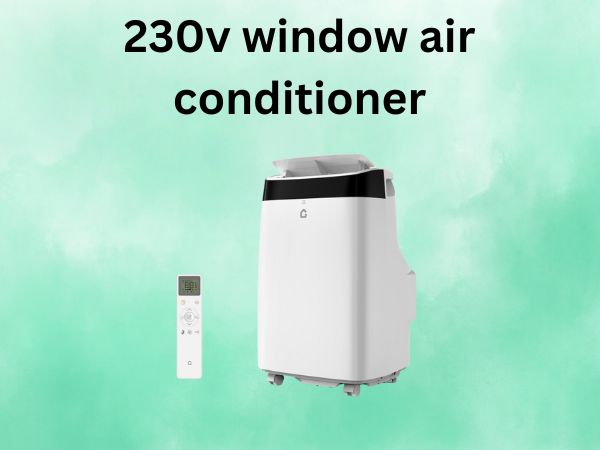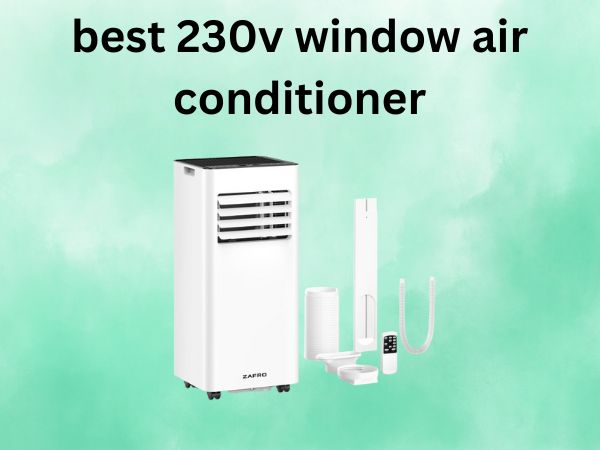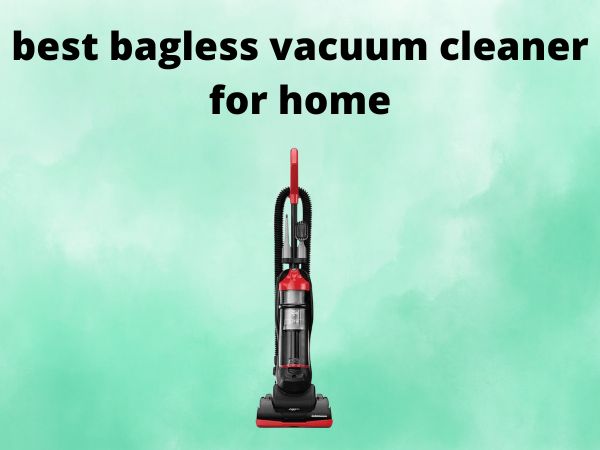5 Best 230V Window Air Conditioners [In 2026]
When summer heat becomes unbearable, finding the right air conditioning solution can make all the difference between comfort and misery. While central air systems might be ideal, they’re not always practical or affordable for everyone. That’s where 230V window air conditioners step in as powerful, efficient alternatives that can cool large spaces without breaking the bank.
Unlike their 115V counterparts, 230V window air conditioners pack significantly more cooling power, making them perfect for larger rooms, apartments, or homes where you need serious cooling capacity. These units typically range from 12,000 to 25,000 BTUs, capable of cooling spaces from 550 to 1,500 square feet effectively.
Table of Contents
Top 5 Best 230V Window Air Conditioners Review
After extensive research and analysis of user feedback, performance specifications, and expert opinions, we’ve identified five outstanding 230V window air conditioners that excel in different categories. Each unit offers unique advantages, making them suitable for specific needs and preferences.
1. Frigidaire 23,000 BTU Window Air Conditioner – Best Overall
The Frigidaire 23,000 BTU unit stands out as our top overall choice, delivering exceptional performance across multiple categories. This 4-in-1 powerhouse combines cooling, heating, dehumidification, and air circulation in a single unit, making it incredibly versatile for year-round comfort.
With 23,000 BTUs of cooling power, this unit effectively handles spaces up to 1,400 square feet, making it ideal for large living rooms, open floor plans, or multiple connected rooms. The addition of 16,000 BTU supplemental heating extends its usefulness into cooler months, though it’s not intended as a primary heat source during the coldest periods.
The digital temperature controls provide precise climate management, while three fan speeds allow you to customize airflow based on your immediate needs. The dehumidification feature removes up to 6 pints of moisture per hour, addressing humidity issues that often accompany hot weather and can make spaces feel uncomfortable even at lower temperatures.
User reviews consistently praise this unit’s installation simplicity and robust cooling performance. Many customers report successfully cooling large, challenging spaces that previously required multiple smaller units. The sleep mode function gradually adjusts temperature throughout the night, promoting better sleep while reducing energy consumption.
Pros and Cons
Pros:
- Exceptional cooling capacity for large spaces up to 1,400 square feet
- 4-in-1 functionality including supplemental heating
- Easy installation process with comprehensive mounting kit
- Effective dehumidification removes excess moisture
- Programmable timer offers flexible scheduling options
- Sleep mode promotes comfortable, energy-efficient nighttime operation
- Remote control with thermostat sensor for accurate temperature control
- Washable filter with cleaning alerts reduces maintenance costs
Cons:
- Higher noise level at 56 dB may be noticeable in quiet environments
- Relatively low SEER rating of 9.4 affects energy efficiency
- Large size and weight require sturdy window frames
- Higher initial cost compared to smaller capacity units
- May be oversized for smaller rooms, leading to short cycling
Who Should Buy This Unit
This Frigidaire unit is perfect for homeowners with large spaces who need reliable, powerful cooling performance. It’s particularly well-suited for those dealing with open floor plans, great rooms, or situations where a single unit must cool multiple connected areas. The supplemental heating feature makes it valuable for those in moderate climates who need year-round climate control from a single unit.
2. Whirlpool 24,000 BTU Inverter Air Conditioner – Quietest Option
The Whirlpool 24,000 BTU inverter air conditioner represents the pinnacle of quiet, efficient cooling technology. Its inverter system continuously adjusts compressor speed rather than cycling on and off, resulting in remarkably quiet operation and superior energy efficiency.
This unit’s standout feature is its mute mode, which reduces operation to just 43 dB – quieter than many refrigerators. This makes it ideal for bedrooms, home offices, or any space where noise is a concern. Despite its quiet operation, it delivers impressive cooling power suitable for spaces up to 1,500 square feet.
The Energy Star rating confirms its efficiency credentials, while the inverter technology provides more consistent temperatures and reduced energy consumption compared to traditional units. Users consistently report satisfaction with both the cooling performance and whisper-quiet operation, even at higher fan speeds.
Installation proves straightforward with the included mounting kit, and the unit’s build quality receives high marks from users. The 3.1 pint per hour dehumidification capacity helps maintain comfortable humidity levels, while the washable filter with clean alerts simplifies maintenance.
Pros and Cons
Pros:
- Exceptionally quiet operation with 43 dB mute mode
- Inverter technology provides superior energy efficiency
- Energy Star certified for reduced operating costs
- Covers large spaces up to 1,500 square feet effectively
- Consistent temperature control without hot and cold cycles
- Well-designed packaging protects unit during shipping
- Independent directional vents for customized airflow
- Includes comprehensive installation hardware
Cons:
- Higher upfront cost due to inverter technology
- Limited heating functionality compared to combo units
- Requires more complex electrical installation
- May be oversized for smaller rooms
- Advanced features might be overwhelming for some users
Who Should Buy This Unit
This Whirlpool unit is ideal for those who prioritize quiet operation without sacrificing cooling power. It’s perfect for bedrooms, home offices, or any environment where noise levels matter. The inverter technology makes it excellent for those focused on energy efficiency and consistent comfort levels.
3. LG 23,000 BTU Window AC with Heat – Best Combo Unit
The LG 23,000 BTU combination unit excels as a year-round climate solution, providing both powerful cooling and effective supplemental heating. This versatility makes it particularly valuable for moderate climates where both heating and cooling needs vary throughout the year.
Operating at sound levels as low as 50 dB in low mode, this unit balances performance with acceptable noise levels. The dual functionality eliminates the need for separate heating and cooling units, saving both space and money while providing comprehensive climate control.
The unit’s 1,400 square foot coverage makes it suitable for large rooms, and the auto-restart feature ensures operation resumes automatically after power outages. User feedback consistently highlights the unit’s reliability and effectiveness in both heating and cooling modes.
Installation is straightforward, and the included remote control makes operation convenient from anywhere in the room. The filter reminder system helps maintain optimal performance by alerting users when cleaning is needed.
Pros and Cons
Pros:
- Dual heating and cooling functionality in one unit
- Relatively quiet operation starting at 50 dB
- Auto-restart function for power outage recovery
- Effective cooling for spaces up to 1,400 square feet
- Good SEER rating of 11.3 for energy efficiency
- Simple, intuitive control panel and remote
- Reliable performance in both heating and cooling modes
- Filter reminder system simplifies maintenance
Cons:
- Heating function is supplemental only, not primary
- Larger size requires adequate window space
- Higher weight demands strong window support
- Limited advanced features compared to premium models
- May short cycle in smaller rooms
Who Should Buy This Unit
This LG unit is perfect for those seeking year-round climate control from a single device. It’s particularly well-suited for moderate climates where both heating and cooling are needed seasonally, and for users who value simplicity and reliability over advanced features.
4. LG 14,000 BTU Through-the-Wall AC – Best for Permanent Installation
The LG through-the-wall unit offers a permanent cooling solution that doesn’t occupy window space. This makes it ideal for rooms where windows need to remain available for light and ventilation, or where a more integrated appearance is desired.
With 14,000 BTUs, this unit effectively cools spaces up to 700 square feet while providing 3.9 pints per hour of dehumidification. The through-the-wall installation creates a cleaner appearance and frees up valuable window space.
The 4-way air deflection system provides superior air distribution compared to many window units, ensuring even cooling throughout the space. Multiple fan speeds and the 24-hour timer offer flexibility in operation, while the auto-restart feature maintains consistent operation.
Users appreciate the permanent installation aspect, which provides security benefits and a more finished appearance. The unit’s reliability and cooling effectiveness receive consistently positive reviews.
Pros and Cons
Pros:
- Permanent installation frees up window space
- 4-way air deflection for superior air distribution
- Auto-restart function for reliable operation
- Effective cooling for medium-sized rooms up to 700 square feet
- Clean, integrated appearance
- Filter reminder system for easy maintenance
- Requires special LCDI plug for enhanced safety
- Multiple fan speeds for customized comfort
Cons:
- Requires wall modification for installation
- Professional installation often necessary
- Limited to specific room sizes
- Higher installation costs
- Difficult to relocate once installed
- Requires specific electrical outlet type
Who Should Buy This Unit
This unit is ideal for homeowners planning permanent installations who want to maintain window functionality. It’s perfect for additions, converted spaces, or rooms where traditional window units aren’t practical or aesthetically pleasing.
5. Whirlpool 12,000 BTU Window AC – Best for Smaller Spaces
The Whirlpool 12,000 BTU unit provides an excellent balance of power and efficiency for medium-sized spaces up to 550 square feet. This makes it perfect for bedrooms, small living areas, or offices where larger units would be oversized and inefficient.
The combination of cooling and supplemental heating in a compact package makes this unit versatile for year-round use. The 10.9 SEER rating indicates good energy efficiency, while the eco mode helps reduce operating costs during moderate weather conditions.
Users consistently praise the unit’s exceptional packaging, which protects it during shipping better than many competitors. The quiet operation and effective cooling receive positive feedback, with many users noting its ability to cool spaces effectively even in challenging conditions.
The 24-hour programmable timer and sleep mode provide convenient automation options, while the washable filter reduces long-term maintenance costs. The remote control simplifies operation from anywhere in the room.
Pros and Cons
Pros:
- Right-sized for medium spaces up to 550 square feet
- Good SEER rating of 10.9 for energy efficiency
- Combination heating and cooling functionality
- Exceptional packaging prevents shipping damage
- Quiet operation suitable for bedrooms
- Easy installation with included mounting kit
- Eco mode reduces energy consumption
- Affordable price point for dual-function unit
Cons:
- Limited cooling capacity for larger spaces
- Heating function is supplemental only
- Basic feature set compared to premium models
- Higher noise level at 59 dB compared to inverter units
- May require professional electrical work for 230V outlet
Who Should Buy This Unit
This Whirlpool unit is perfect for those with medium-sized spaces who want dual functionality without paying for excess capacity. It’s ideal for bedrooms, small apartments, or offices where efficient, reliable climate control is more important than advanced features.
Why 230V Window AC Units Are Essential
Have you ever wondered why some window air conditioners seem to struggle with larger rooms while others effortlessly maintain comfortable temperatures? The answer often lies in voltage. 230V air conditioners operate at twice the voltage of standard 115V units, allowing them to deliver substantially more cooling power without proportionally increasing energy consumption.
These powerful units are particularly valuable for homeowners dealing with open floor plans, large bedrooms, or spaces where traditional window units simply can’t keep up. They’re also excellent for supplementing existing HVAC systems or providing targeted cooling in specific areas of your home.
The beauty of 230V window air conditioners lies in their versatility. Whether you’re a renter who can’t install central air, a homeowner looking to reduce energy costs by cooling only occupied spaces, or someone dealing with an inadequate existing system, these units offer a practical solution that combines power, efficiency, and convenience.
What Makes a Great 230V Window Air Conditioner?
Choosing the right 230V window air conditioner involves more than just picking the highest BTU rating. Several factors contribute to overall performance and user satisfaction, and understanding these elements will help you make an informed decision that serves you well for years to come.
Key Features to Consider
The most effective 230V air conditioners share certain characteristics that set them apart from mediocre units. First and foremost is cooling capacity, measured in BTUs (British Thermal Units). This determines how much heat the unit can remove from your space per hour. However, more BTUs aren’t always better – you need to match the capacity to your room size for optimal efficiency.
Remote control functionality has become essential in modern units. The ability to adjust temperature, fan speed, and operating modes from across the room adds significant convenience, especially when the unit is installed high in a window. Look for remotes with clear displays and intuitive controls that won’t leave you fumbling in the dark.
Programmable timers and sleep modes contribute to both comfort and energy savings. These features allow you to schedule cooling cycles around your daily routine, ensuring you return to a comfortable environment without wasting energy when you’re away. Sleep modes typically gradually adjust temperature throughout the night, maintaining comfort while reducing energy consumption.
Multi-directional airflow control helps distribute cooled air more effectively throughout your space. Units with adjustable louvers and multiple fan speeds give you greater control over how and where the cool air flows, preventing hot spots and ensuring even temperature distribution.
Energy Efficiency Ratings
Energy efficiency directly impacts your monthly utility bills and environmental footprint. The Energy Efficiency Ratio (EER) and Seasonal Energy Efficiency Ratio (SEER) provide standardized measures of how efficiently a unit converts electricity into cooling power. Higher ratings indicate better efficiency, though these efficient units often come with higher upfront costs that pay off through reduced operating expenses.
Energy Star certification represents a significant efficiency benchmark. Units bearing this label meet strict energy efficiency guidelines set by the EPA, typically consuming 10-15% less energy than standard models. While the initial investment might be higher, Energy Star units often qualify for utility rebates and deliver substantial long-term savings.
Inverter technology represents the cutting edge of air conditioner efficiency. Unlike traditional units that cycle on and off at full power, inverter units continuously adjust compressor speed to maintain desired temperatures. This results in more consistent temperatures, reduced energy consumption, and quieter operation.
Installation Requirements
230V air conditioners require dedicated electrical circuits and proper outlets, which might necessitate electrical work by a qualified professional. Most units require NEMA 6-15 or 6-20 outlets, which differ from standard household outlets. Understanding these requirements upfront prevents installation delays and unexpected costs.
Window requirements vary significantly between units. Measure your window opening carefully, considering both width and height restrictions. Some units require minimum window heights, while others have specific width requirements. Additionally, consider the unit’s weight and ensure your window frame and sill can support it safely.
Proper installation affects both performance and safety. Units must be slightly tilted toward the outside for drainage, securely fastened to prevent accidents, and properly sealed to prevent air leaks. Many manufacturers provide detailed installation kits, but don’t hesitate to seek professional help if you’re unsure about any aspect of the process.
Detailed Comparison of Features
Understanding how these units compare across key performance metrics helps you make an informed decision based on your specific needs and priorities. Each unit excels in different areas, making the right choice dependent on your unique situation.

Cooling Capacity and Room Size
Matching cooling capacity to room size is crucial for both comfort and efficiency. Oversized units cycle on and off frequently, failing to remove humidity effectively and wasting energy. Undersized units run constantly, struggling to maintain comfortable temperatures while consuming excessive energy.
The Whirlpool 24,000 BTU inverter unit leads in cooling capacity, effectively handling spaces up to 1,500 square feet. Its inverter technology maintains consistent temperatures without the cycling issues common in oversized traditional units. This makes it ideal for large, open spaces or challenging cooling situations.
The Frigidaire and LG 23,000 BTU units both handle up to 1,400 square feet effectively. The Frigidaire’s 4-in-1 functionality adds value through dehumidification and heating, while the LG unit focuses on reliable heating and cooling performance with good energy efficiency.
For medium-sized spaces, the LG 14,000 BTU through-the-wall unit covers up to 700 square feet, making it perfect for bedrooms or small living areas. The Whirlpool 12,000 BTU unit handles up to 550 square feet, ideal for compact spaces where larger units would be wasteful.
Energy Efficiency and Operating Costs
Energy efficiency directly impacts your monthly utility bills and environmental footprint. The units in our review show significant variation in efficiency ratings, affecting long-term operating costs.
The LG 23,000 BTU unit leads with an 11.3 SEER rating, indicating superior energy efficiency among high-capacity units. This efficiency, combined with its reliable performance, makes it an excellent choice for those prioritizing low operating costs.
The Whirlpool 12,000 BTU unit’s 10.9 SEER rating represents good efficiency in the medium-capacity category. For its size and dual functionality, this rating indicates reasonable operating costs for year-round use.
The Whirlpool 24,000 BTU inverter unit, while lacking a specific SEER rating in our data, benefits from inverter technology that typically provides 20-30% better efficiency than traditional units. The Energy Star certification confirms its efficiency credentials.
The Frigidaire unit’s 9.4 SEER rating falls below current efficiency standards but remains acceptable given its comprehensive feature set. The LG through-the-wall unit’s 9.3 SEER rating reflects typical performance for this installation type.
Noise Levels Comparison
Noise levels significantly impact user satisfaction, particularly in bedrooms, home offices, or quiet environments. The units in our review show substantial variation in acoustic performance.
The Whirlpool 24,000 BTU inverter unit excels with its 43 dB mute mode, making it the quietest option available. This whisper-quiet operation comes from inverter technology that eliminates the constant on-off cycling of traditional compressors.
The LG 23,000 BTU combo unit operates at 50 dB in low mode, providing a good balance between cooling power and acceptable noise levels. This makes it suitable for most residential applications without causing significant disturbance.
The Frigidaire unit operates at 56 dB, which is noticeable but not excessive for its high cooling capacity. The Whirlpool 12,000 BTU unit’s 59 dB rating reflects typical performance for traditional compressor technology in this capacity range.
Users should consider room location and personal noise sensitivity when evaluating these specifications. Bedroom installations particularly benefit from quieter units, while living areas may tolerate higher noise levels in exchange for other benefits.
Installation Guide for 230V Window Air Conditioners
Proper installation is crucial for safety, performance, and longevity of your 230V window air conditioner. While many homeowners can handle the installation themselves, understanding the requirements and process helps ensure success.
Electrical Requirements
230V air conditioners require dedicated electrical circuits and specific outlet types that differ from standard household outlets. Most units require either NEMA 6-15 (15 amp) or NEMA 6-20 (20 amp) outlets, depending on their power consumption.
Before installation, verify that your electrical system can support the unit’s requirements. Check your electrical panel for available circuit capacity and ensure the installation location has appropriate wiring. If the required outlet doesn’t exist, you’ll need a qualified electrician to install one.
Ground Fault Circuit Interrupter (GFCI) protection may be required by local codes, particularly for units installed in locations where moisture might be present. Some units include LCDI (Leakage Current Detection and Interruption) plugs that provide similar protection.
Never use extension cords or adapters with 230V air conditioners. These units draw significant current, and improper connections create fire hazards and voltage drops that can damage the equipment.
Step-by-Step Installation Process
Begin installation by carefully reading the manufacturer’s instructions and gathering all necessary tools. Most installations require basic hand tools, a level, and possibly a drill for securing brackets.
Prepare the window by cleaning the sill and ensuring it’s level and structurally sound. Most units require the window to be opened to specific dimensions, and some have minimum height requirements that must be verified before beginning.
Install the mounting brackets according to the manufacturer’s specifications. These brackets support much of the unit’s weight and must be securely fastened to the window frame. Use the provided screws and ensure all connections are tight.
Carefully lift the unit into position, ideally with assistance due to the significant weight of 230V units. Position the unit so it tilts slightly toward the outside for proper drainage, typically about 1/4 inch slope.
Secure the unit using all provided brackets and screws. Install the side panels and weatherstripping to seal gaps and prevent air leaks. Test the unit’s stability by gently pushing on it – there should be no movement or shifting.
Safety Considerations
Safety should be your primary concern throughout the installation process. 230V units are heavier than standard air conditioners, often weighing 80-150 pounds. Always use appropriate lifting techniques and seek assistance when needed.
Ensure the window structure can support the unit’s weight. Older windows or those in poor condition may require reinforcement or professional evaluation before installation. Consider external support brackets for heavy units or questionable window structures.
Electrical safety is paramount when working with 230V units. Turn off power at the circuit breaker before making any electrical connections. If you’re uncomfortable with electrical work or your installation requires new circuits, hire a qualified electrician.
Test the unit thoroughly after installation, checking for proper operation in all modes. Verify that the unit doesn’t vibrate excessively, produces appropriate airflow, and maintains stable temperatures. Any unusual noises or performance issues should be addressed immediately.
Maintenance Tips for Optimal Performance
Regular maintenance extends your air conditioner’s life, maintains efficiency, and prevents costly repairs. Most maintenance tasks are simple and can be performed by homeowners with basic tools and attention to detail.
Filter Cleaning and Replacement
Air filters require the most frequent attention, typically needing cleaning every 2-4 weeks during heavy use periods. Dirty filters restrict airflow, reduce efficiency, and can damage the unit’s components over time.
Most 230V units feature washable filters that can be cleaned with mild soap and water. Remove the filter carefully, noting its orientation for proper reinstallation. Rinse thoroughly and allow complete drying before reinstalling.
Some units include filter reminder systems that alert you when cleaning is needed. Don’t ignore these alerts – timely filter maintenance significantly impacts performance and operating costs.
Consider the environment when determining cleaning frequency. Dusty conditions, pet hair, or high pollen levels may require more frequent filter attention. Units with pets in the home often need weekly filter cleaning during peak seasons.
Seasonal Maintenance
Comprehensive seasonal maintenance ensures optimal performance and identifies potential issues before they become major problems. Spring preparation is particularly important after months of inactivity.
Before the cooling season begins, clean the unit’s exterior with a soft brush or vacuum to remove accumulated dust and debris. Check all electrical connections for tightness and corrosion. Inspect the window seals and weatherstripping for damage that could allow air leaks.
Test all operating modes and features to ensure proper function. This includes cooling, heating (if equipped), fan speeds, timer functions, and remote control operation. Address any issues before you need the unit for comfort.
During the cooling season, periodically check the condensate drainage to ensure water flows properly to the outside. Blocked drainage can cause water damage and create conditions favorable to mold growth.
End-of-season maintenance involves thoroughly cleaning the unit and preparing it for storage or winter operation. Clean filters, remove any accumulated debris, and consider covering the exterior portion to protect it from weather if the unit remains installed.
Cost Analysis: Initial Investment vs Long-Term Savings
Understanding the total cost of ownership helps you make informed decisions that balance upfront expenses with long-term operating costs and benefits. 230V air conditioners often represent significant investments that pay dividends through years of reliable service.
Initial purchase prices vary significantly based on capacity, features, and efficiency ratings. Basic 12,000 BTU units start around $400-600, while high-capacity inverter units can exceed $800-1,200. However, focusing solely on purchase price ignores critical factors that affect long-term value.
Energy efficiency dramatically impacts operating costs over the unit’s lifetime. A unit with a 10% better efficiency rating can save hundreds of dollars annually in electricity costs for high-use applications. Energy Star units often qualify for utility rebates that offset higher purchase prices.
Installation costs vary depending on electrical requirements and complexity. Units requiring new 230V outlets add $200-500 in electrical work, while through-the-wall installations may cost $500-1,000 including professional installation.
Reliability and warranty coverage affect long-term costs through reduced repair expenses and replacement frequency. Units from established manufacturers with comprehensive warranties often provide better long-term value despite higher initial costs.
Consider the alternative costs of inadequate cooling. Window units that struggle to maintain comfortable temperatures often run constantly, consuming excessive energy while failing to provide adequate comfort. Properly sized, efficient units provide better comfort at lower operating costs.
Common Problems and Troubleshooting
Understanding common issues and their solutions helps you maintain optimal performance and avoid unnecessary service calls. Many problems have simple solutions that homeowners can address without professional assistance.
Insufficient cooling often results from dirty filters, blocked airflow, or incorrect thermostat settings. Before calling for service, clean the filter, ensure vents aren’t blocked, and verify the thermostat is set appropriately for the room size and conditions.
Unusual noises can indicate loose components, debris in the unit, or worn parts. Rattling often comes from loose panels or mounting hardware, while grinding or squealing suggests bearing or motor issues requiring professional attention.
Water leaks inside the room typically result from improper installation angle or blocked drainage. Units should tilt slightly toward the outside to promote proper drainage. Clean drainage channels and ensure nothing blocks water flow.
Electrical issues like tripped breakers or units that won’t start often stem from power supply problems, dirty contacts, or component failures. Check circuit breakers, clean electrical connections, and verify the unit receives proper voltage before seeking professional help.
Remote control problems usually involve battery issues, signal interference, or programming errors. Replace batteries, ensure clear line-of-sight between remote and unit, and consult the manual for proper programming procedures.
Frequently Asked Questions (FAQs)
Q: What’s the difference between 115V and 230V window air conditioners?
A: 230V units operate at twice the voltage of standard 115V units, allowing them to deliver significantly more cooling power (typically 12,000+ BTUs vs 8,000-12,000 BTUs) while maintaining reasonable energy efficiency. This makes 230V units ideal for larger spaces that 115V units cannot cool effectively. However, 230V units require special electrical outlets and dedicated circuits, often necessitating electrical work by a qualified professional.
Q: Can I install a 230V window air conditioner in any window?
A: Not all windows are suitable for 230V air conditioners. These units are typically larger and heavier than 115V models, requiring sturdy window frames capable of supporting 80-150+ pounds. You’ll also need access to a 230V electrical outlet near the installation location. Measure your window opening carefully and verify it meets the manufacturer’s size requirements before purchasing.
Q: How much does it cost to run a 230V window air conditioner?
A: Operating costs depend on the unit’s efficiency rating, local electricity rates, usage patterns, and room conditions. A 15,000 BTU unit with a 10 SEER rating running 8 hours daily might cost $100-200 per month during peak summer months, depending on your local electricity rates. More efficient units and moderate usage can significantly reduce these costs. Energy Star certified units typically cost 10-15% less to operate than standard models.
Q: Do I need an electrician to install a 230V window air conditioner?
A: If you already have the appropriate 230V outlet (NEMA 6-15 or 6-20) near your installation location, you can likely install the unit yourself following the manufacturer’s instructions. However, if you need a new 230V circuit or outlet installed, you’ll need a qualified electrician. Many local codes require professional electrical work for 230V installations, so check with your local building department before proceeding.
Q: How often should I clean or replace the filter in my 230V air conditioner?
A: Most washable filters should be cleaned every 2-4 weeks during heavy use periods, though this can vary based on environmental conditions. Homes with pets, high dust levels, or during high pollen seasons may require weekly cleaning. Many units include filter reminder systems that alert you when cleaning is needed. Clean filters are crucial for optimal performance, energy efficiency, and air quality, so don’t neglect this simple but important maintenance task.
Conclusion
Selecting the right 230V window air conditioner requires balancing multiple factors including cooling capacity, energy efficiency, noise levels, and special features that match your specific needs. The five units we’ve reviewed each excel in different areas, making the best choice dependent on your unique situation.
The Frigidaire 23,000 BTU unit stands out as our top overall choice, offering exceptional versatility through its 4-in-1 functionality and powerful cooling capacity. It’s ideal for those who need reliable performance across large spaces and appreciate comprehensive climate control features.
For those prioritizing quiet operation, the Whirlpool 24,000 BTU inverter unit provides unmatched silence while delivering superior efficiency and consistent temperatures. Its advanced technology justifies the higher initial investment through reduced operating costs and enhanced comfort.
The LG combo units offer excellent value for those seeking year-round climate control, while the through-the-wall option provides permanent installation benefits for specific applications. The Whirlpool 12,000 BTU unit rounds out our recommendations as an affordable, efficient choice for medium-sized spaces.
Remember that proper installation, regular maintenance, and appropriate sizing are crucial for optimal performance regardless of which unit you choose. Consider your specific cooling needs, room characteristics, and long-term goals when making your decision.
Investing in a quality 230V window air conditioner pays dividends through years of reliable comfort, energy savings, and convenience. Choose wisely, install properly, and maintain regularly to maximize your investment’s value and performance.




